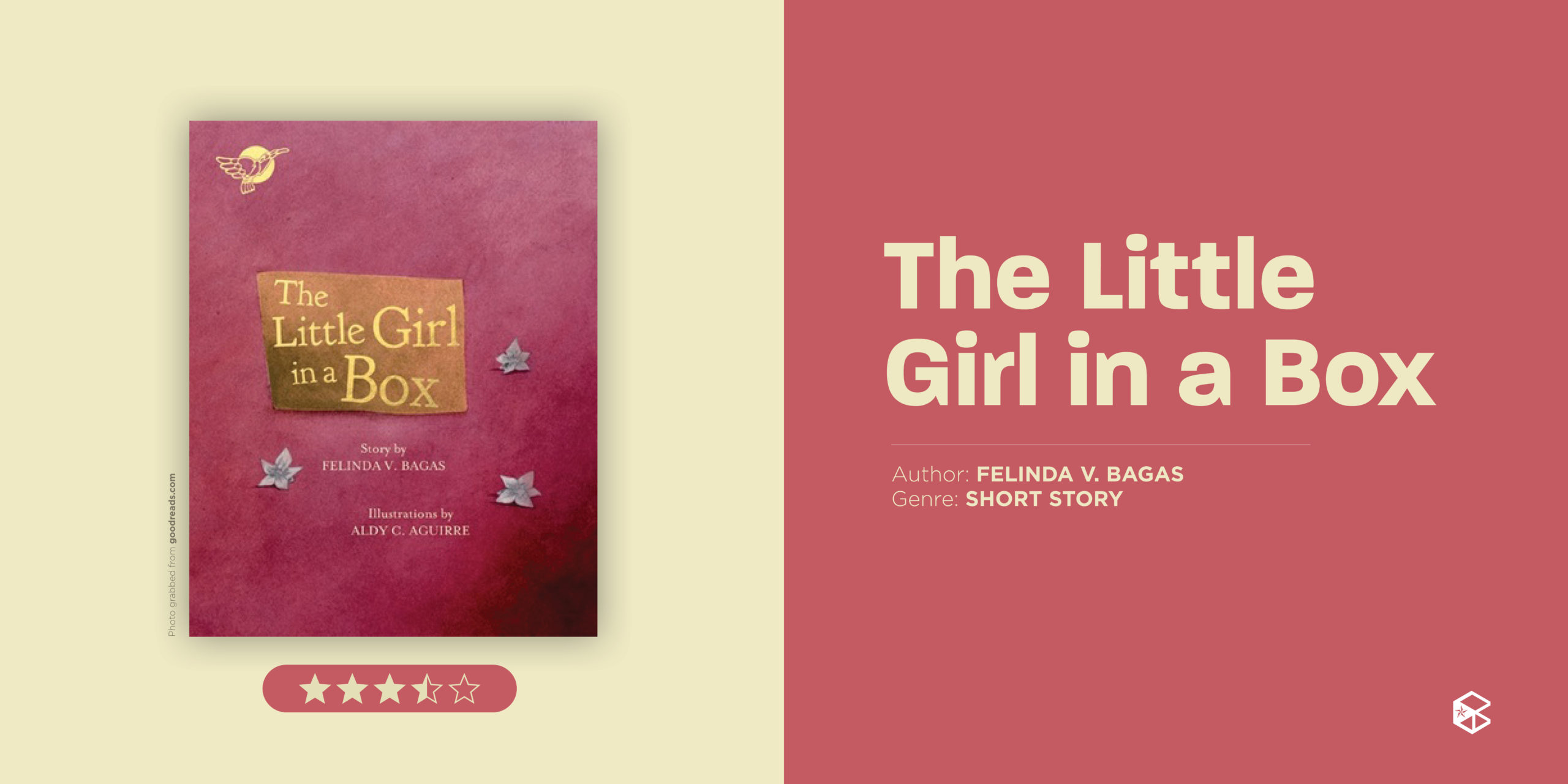Embarking on a journey through a child’s adventure is one of the most fascinating and recurring themes popularly done in children’s books. Through a more child-like view and approach of the world, Felinda V. Bagas’ debut children’s book titled The Little Girl in a Box creates a new experience for readers in what could have easily been a common cliche through creative storytelling and fantasy-like illustration.
Receiving an Honorable Mention for the Salanga Writer’s Prize by The Philippine Board on Books for Young People, Bagas’ work, which was illustrated by Aldy C. Aguirre, The Little Girl in a Box is a children’s book published in 2013 under Adarna House, Inc. With its simple and sophisticated storyline and mystical illustration, the book won fourth place in Best Reads for 2014 in the country’s 3rd National Children’s Book Awards despite it being the author’s first children’s book.
The author used to be the president of Kuwentista ng mga Tsikiting (KUTING) and has previously written plays, musicals, and television scripts for children. On the other hand, the illustrator Aguirre, is part of Ang Illustrador ng Kabataaan (AngInk) and has been awarded PBBY Alcala Illustrator’s Prize in 2010 while he also competed in the Lampara Book’s Illustrators Prize.
What sets it apart
The cleverly designed book, which looks like a box itself, manages to immediately portray itself vividly with a strategically placed pop-up on the cover with the little girl when you flip open her cardboard box.
The book talks about hard-hitting topics following an orphaned girl who tries to find a place for her to fit in while she uses her cardboard box for transportation. It discusses issues that could turn too heavy if done differently, but instead turned around with the mix of fantasy-like scenes that makes it feel much more lighter and fitting for a child’s perspective.
Many adventures in children’s books are fascinating because of the magical aspect of it that inspires curiosity. However, it could also easily turn into nonsense fillers hard to fit into reality and be lost in the delivery of the conflict, while it tries to make the scene feel more like fantasy. The book balances it all out in one way or another. In what could have been just an ordinary and simple scene, the book adds tiny details to make it feel more mystical like in how the little girl moved to a village up in the mountains, but instead made it out to be like flying with clouds to see the sun.
Eye-catching illustrations
While the book delves into heavy areas of what it is like being an orphan; the loneliness of trying to find love in different places, and the use of escapism to run away from loneliness—the illustration serves as a juxtaposition with colors that prevents it from being too heavy and dark, but is still able to match the overall mood. The illustrations made by Aguirre made use of a variety of mild colors of blue, green, yellow, white, and black.
All the while, the story lets us unfold her life differently with the whole book set to give the view of straight corners and lines in the different settings of the book, whether it is in a room or in the mountains. The illustration makes us feel like we are viewing every scene in a box as well, peeking into the life of the character.
Another exciting part of the illustration is how the lines are interpreted in a playful and interesting way that makes one double look. In line with negative emotions, the illustration uses dark undertones and makes monster-looking versions of the characters. The use of animal-like figures in other characters aside from the little girl makes the story more eye-catching and adds the whole fantasy element of it, preventing it from being too plain.
Brevity in narration
The Little Girl in a Box delivers lines that are easy and simple to understand, but creatively flows well in the sense that it is able to set the mix of both heavy and light tones of the whole story as it portrays mixed emotions of loneliness, fear, sadness, uncertainty, and hope.
In the book, the little girl tries to find a place she could call home as she goes on a journey where she switches from one place to another when conflict arises, eventually turning to her cardboard box as a safety blanket. This is highlighted in how she would always return inside of it and how it changes to a car when she gets older to transport her to a different place to stay in.
The story does not shy away from being direct with where it is going, facing the reality head on of both being an orphan and adopted, a topic rarely discussed in children’s books. The narration is gripping with its grasp on different emotions using colorful language, making it easier to empathize to the little girl and her troubles as the author also writes as if to feel like poetry.
For example, “Soon, the little girl felt her limbs turn to wood from all the staying still, and her mouth stitched together from all the keeping quiet.” The narration of the book is done well, however where it falls short is its lack of dialogue to further be able to grasp the character of the story and her development even more.
Overall, Bagas’ book gives us a peek inside the little girl’s box and what is enclosed in it: the mind of a little girl living with complex emotions and experiences.
The Little Girl in a Box is available in local bookstores.


